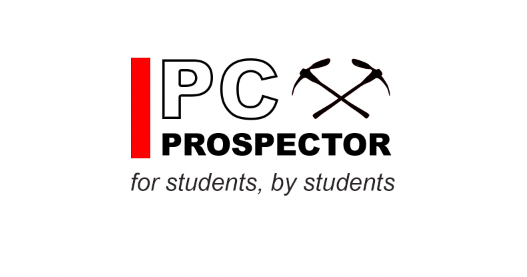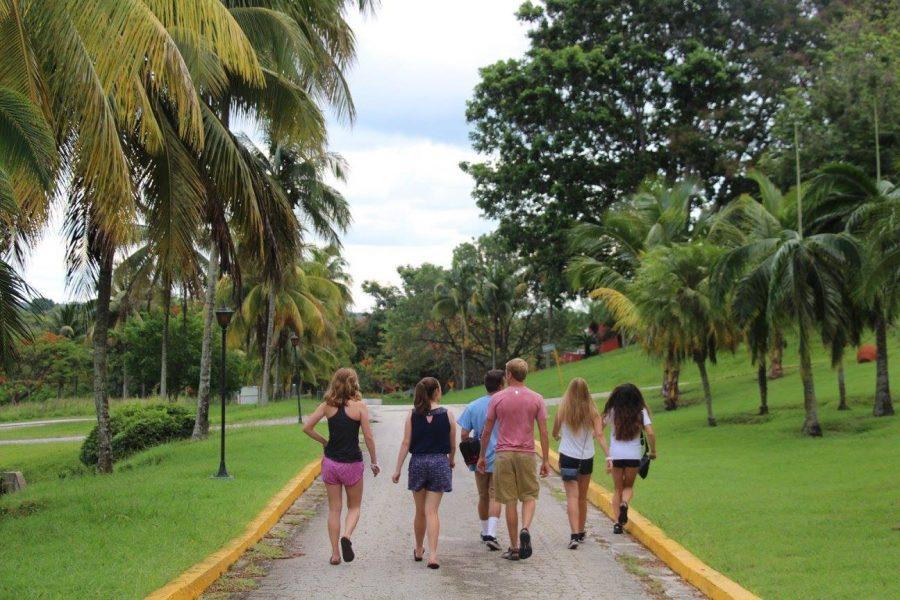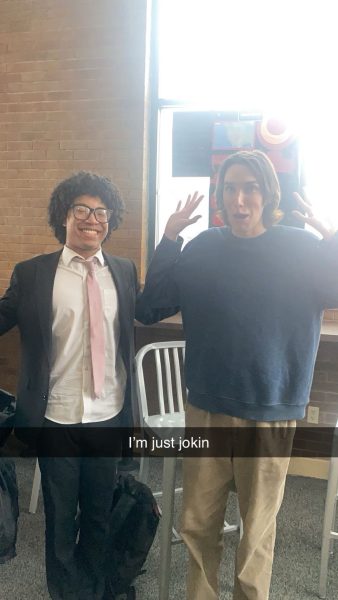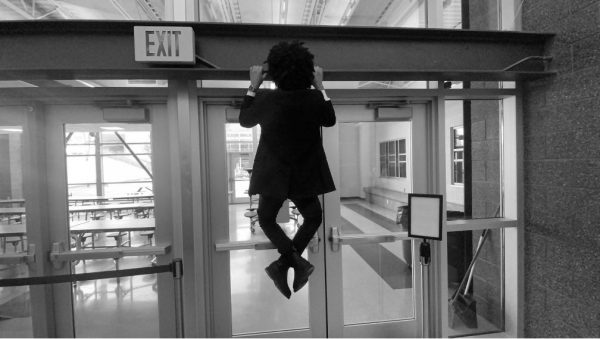Cuba
Seven of us pile into the small 1955 Chevy Bel Air. The air is thick with the smell of sunscreen and gasoline; our bodies are jammed against each other, a mess of sticky arms and legs. Someone tries to pull down one of the windows but it’s jammed, so we resign to sitting in the stuffy car. We pass rows of ripe mango trees, feeling the jerk of the manual engine shifting as we drive along. As we pull onto the main road, we pass a few billboards depicting socialist propaganda and struggle to snap a decent photo of them.
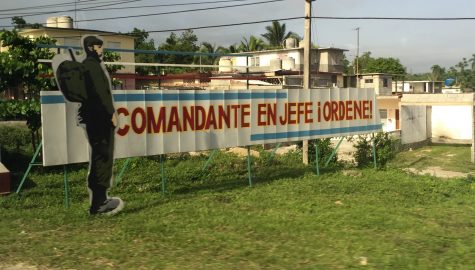
The twenty-three of us were the first group of high school students to legally set foot on the island since Kennedy instituted the embargo in 1962. We spent most of our time volunteering in the city of Sancti Spirítus with the local Presbyterian church. During the days we worked in various parts of the community; some of the students helped deliver water to city-dwellers, others, like ourselves, worked in the community gardens. After the mid-day heat arrived, we would take some time to explore the city and relax before returning to the church to teach English.
Surprisingly, the Cuban people we worked with were very open to discussing their government and history with us. Over the course of the trip, we managed to piece together a picture of what it’s like to live in Cuba in 2016.
The History of Cuba
In the early 1950s, Cuba was a rich American’s playground. According to PBS the country was ranked 5th in the world for per capita income. Rates of television ownership and other technological devices were some of the highest in the world. Havana sparkled with sin and temptation.
Underneath all the pomp and circumstance, rural Cuba was struggling. Many died of easily curable diseases; graves littered the countryside. Opportunities for employment were limited; what little work could be found rarely lasted longer than the short growing season. Frustration with the American-supported government, run by Cuban President Batista, was growing. Using the support of discontented Cubans, Fidel Castro and his group of communist guerillas took power in 1959.
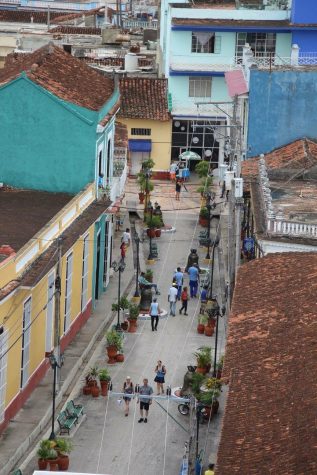 Sierra Wells, a junior who attended the trip, says, “It surprised me that the US supported the authoritarian Batista regime simply for its capitalist benefits to the US. That part of the story is always hidden”.
Sierra Wells, a junior who attended the trip, says, “It surprised me that the US supported the authoritarian Batista regime simply for its capitalist benefits to the US. That part of the story is always hidden”.
The rest of the story you’ve probably heard in some capacity; in 1962, Kennedy put the infamous embargo in place after Castro nationalized American property. Later that year, the Soviets placed nuclear missiles in Cuba. Relations between the US and Cuba fell apart, the two nations using Switzerland to mediate when negotiations became necessary. Cuba became dependent on the Soviet Union, who provided everything from godawful cars to cups and utensils. Some figures claim that over 80% of Cuba’s trade was done through the USSR. When the Soviet Union collapsed in the early 90’s, Cuba was devastated and their oil reserves dropped. Only a deal with the Venezuelans held them up.
The People’s Opinions
The people we worked with in Cuba had contrasting views of their socialist government. The older generation — those who have experienced Cuba before 1959 — think very highly of the socialist regime. Many of the older Cubans we talked to are members the local Communist Party.
Carlos, who we worked with in the community garden, had fought in Castro’s revolution at the age of fifteen. When we spoke, he acknowledged the yearn that the younger generation has to leave Cuba. However, he believed their desire stems out of the fact that they’ve never known anything but modern Cuba. The reason they want something entirely different is because they’ve never experienced anything different; they’d never gone through the struggles that the previous generation had under a capitalist system.
It’s easy to understand why Cuba’s youth wish for a different life. Although they may not be living in extreme poverty, they still have minimal economic mobility. The average wage in Cuba is roughly twenty U.S. dollars per month; a high wage would be eighty dollars. Senior Lauren Robertson states that although Cuban’s don’t earn very much, “The generosity found in Cuba was surreal”.
While there isn’t much opportunity to make money in Cuba, the educational opportunity is immense. Education in Cuba is completely free, including undergraduate and graduate programs. Young Cubans can achieve the highest levels of education without being restrained by cost. Although this sounds incredible, the incentive to pursue a professional degree isn’t there; someone with a Ph.D. doesn’t earn much more than the common man. A Cuban woman we talked with, who is a professor at the local university, José Martí University, said she has a master’s degree and makes thirty-one dollars a month.
It’s easy, as outsiders, to judge the Cuban system, especially given our long history of anti-communist rhetoric. Sierra Wells says ,“It is easy to compare the US to Cuba and say the socialist system has failed because the [average] Cuban is considerably poorer than the average American. But, considering the context, and comparing [Cuba] to other Latin American countries, I would say it has brought many benefits to the people as well as an increased sense of community.”
It’s not up to us to decide how the Cuban people should run their country or dictate what is right and what is wrong. Our economic system has advantages and disadvantages, just like theirs.
